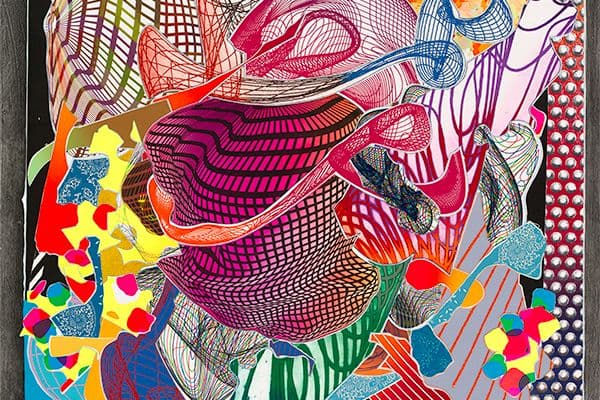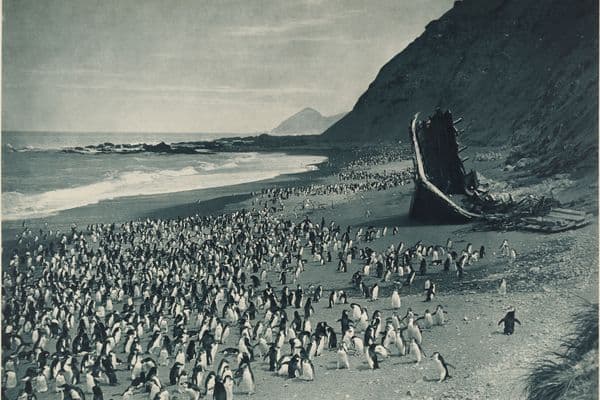The Traveller's Eye
Photographs from the Nineteenth Century
27 Oct 1984 – 3 Feb 1985

Felix Teynard, H. de Fonteny, Egypte. Gournah (Thebes). Colosses (Celui de droite, dit de Memnon), c1851-52, National Gallery of Australia, Kamberri/Canberra, Purchased 1983.
Exhibition Pamphlet Essay
Nineteenth-century travellers enthusiastically adopted photography shortly after its invention in 1839. Despite the difficulties that accompanied the early processes the camera's ability to reproduce the world with amazing detail and apparent veracity prompted growing numbers of amateur and professional photographers to take cameras on their travels.
While early photographers visited most parts of the world, including Australia, a particular focus of their attention was the Middle East. After Napoleon's invasion of Egypt in 1798 the region attracted scores of European archaeologists, artists and travellers and by the 1840s many photographers were joining them.
The most productive photographers in the Middle East until the 1860s were the French. Many travelled there to capitalize on the European fascination for the exotic 'other world' by taking photographs of architectural, artistic and natural wonders for publication in travel or 'view' books, but the major photographic contributions of the period came primarily from scientific expeditions.
Maxime Du Camp, August Salzmann and Félix Teynard all travelled on commission from the French Ministry of Education to photographically document important Middle Eastern architecture. The precise and objective recording of monuments and archaeological sites by the camera subscribed to the nineteenth-century preoccupation with cataloguing and ordering the world. Government sponsorship of such expeditions was promoted to some extent by the Second Empire's expansionist policies. The symbolic visual appropriation of Middle Eastern cultural history was related to Napoleon III's desire to possess the countries themselves. Indeed in 1851 photography critic Francis Wey referred to such photographic missions as conquêtes pacifiques (peaceful conquests).
While such official expeditions may have had scientific and underlying political intentions the resultant images are, perhaps paradoxically, amongst the most beautiful travel photographs of the era. They also include some of the best examples of the French refinement of William Henry Fox Talbot's calotype or salted paper process.
The soft, evocative salted paper prints made from paper negatives were all but superseded around 1855 by Frederick Scott Archer's collodion wet plate negative process. The albumen silver prints generally made from these glass negatives not only presented a sharply detailed and startlingly realistic vision of the world but an infinite number of prints could be made from each negative. Photographs of far-off countries increased in popularity and more professional photographers found it economically viable to enter the field of travel views.
While most photographers chose architectural or natural wonders as their subjects a smaller group documented contemporary events in other countries. One of the most extraordinary of the photographers to specialize in this area was Felice Beato.
After photographing the Crimean War and Bengal-Sepoy Mutiny (or First War of Independence), Beato travelled to China in 1860 as the semi-official photographer to the British forces involved in the Second Opium War. He documented the progress of the Anglo-French armies as they successfully fought to force China to open further trading ports and allow the importation of opium into their country. His photographs present a highly politic portrayal of the conquering western forces.
Beato was the first photography to have such a wide access in China for the country had previously been closed to all but a few foreigners. Written accounts and artefacts that did comes to the West in the eighteenth century had helped foster a vision of China as an exotic world and interest in this part of the seemingly mysterious Orient was high. To exploit the economic possibilities of his situation Beato not only documented the war but also photographed the Chinese people and their architectural monuments.
Another important and highly successful British contributor to travel photography was Francis Frith, who made three excursions to the Middle East in the 1850s. Frith concentrated on photographing Judaeo-Christian sites in the Holy Land and archaeologically significant monuments in Egypt, usually presenting his images in albums.
Both Frith and Beato used the collodion wet plate process which required the plates to be coated prior to exposure and developed before the surface dried and hardened. This meant carrying on one’s voyage a dark tent, glass plates, chemicals, dishes, measures, cameras and a large supply of water. Some of the difficulties photographers could experience, especially when working in hot climates, are described by Frith:
“When at the Second Cataract one thousand miles from the mouth of the Nine, with the thermometer at 110°[F] in my tent, the collodion actually boiled when poured upon the glass plate, I almost despaired of success.”
Like more travel photographers of the period Frith also made stereoscopic images. These enormously popular cards consisted of a pair of photographs that gave the illusion of three-dimensional space when seen through a special viewer. Dramatic landscapes were a favourite subject of stereos and the American wilderness, in particular, proved a rich source of such images.
The American stereographs in this exhibition reveal two sides of mid-nineteenth century attitudes towards nature. Photographers such as Carleton Watkins and Eadweard Muybridge depicted the landscape as a wild paradise, unpeopled and untouched, invoking in its awesome mountains and limitless vistas the omnipresence of God. This relationship of God, Man and Nature was codified in the aesthetic of the ‘sublime’ and although this conception was beginning to collapse by the end of the 1860s photographers continued to sustain notions of the picturesque throughout the 1880s.
The culmination of this intertwining of God and Nature coincided in America with the destruction of large tracts of wilderness for cultivation. The appropriation of the untouched landscape for economic uses saw a steady replacement in the arts of the symbols of the sublime by a new iconography of progress and destruction.
A major icon of technological development was the railroad and photographers including Andrew Joseph Russell and William Henry Jackson were employed by rail companies to document the laying of the track across the wilderness. Photographers were also involved in the government surveys which charted the country as part of the assessment of its economic potential. The work of Timothy O’Sullivan and William Bell, for example, frequently involved supplying photographic evidence for geological research.
Australian photographers were also involved in government expeditions, the first successful work probably being J. Brooks and Samuel Sweet’s documentation of the Northern Territory Survey Expedition in 1870.
Fifteen years later J.W. Lindt accompanied the Australian expedition in its annexation of south-east New Guinea. He was possibly the first photographer to visit that country and he travelled through difficult terrain to photograph the people and their customs. His photographs, accentuating the foreignness of the New Guinea villagers’ life-style, were aimed at a largely European audience eager for scenes of the ‘primitive’ and ‘exotic’.
The travelling photographers of the nineteenth century set out to make objective documents about the countries they explored but their photographs often reveal less of the people and places recorded than the artistic, political and scientific values of those who took or commissioned them.











